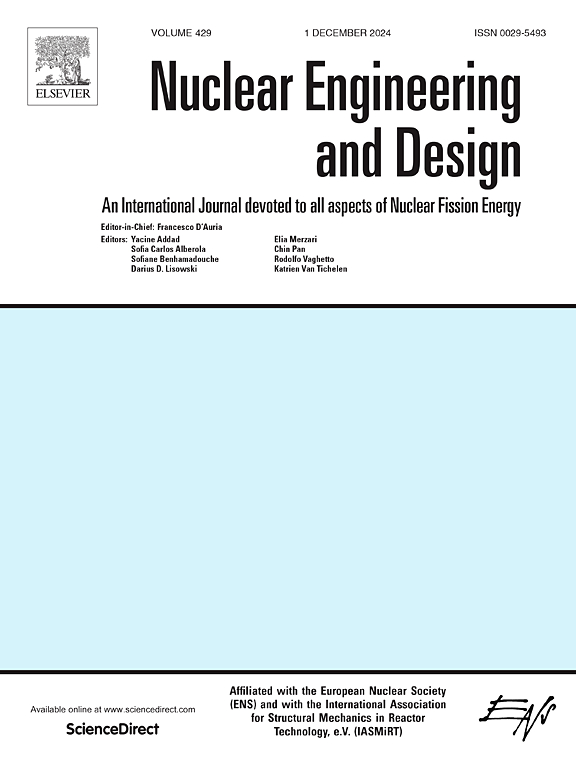An Artificial Neural Network (ANN) Model to Predict Critical Heat Flux (CHF) in a CANDU Fuel Element Simulation (FES) with Various Nonuniform Axial Heat Flux Shapes and Flow Liner Creep Profiles
IF 1.9
3区 工程技术
Q1 NUCLEAR SCIENCE & TECHNOLOGY
引用次数: 0
Abstract
A classification ANN model was developed to predict critical power in a CANDU Fuel Element Simulation (FES) with various Axial Heat Flux Distributions (AFDs) and flow liner creep profiles. The ANN model employs 29 input features to model the AFDs and liner creep profiles and was trained by 433 test data. The classification ANN model was benchmarked against a standard regression ANN model developed with TensorFlow and the results are presented in this paper. The two models delivered roughly the same level of accuracy with a Root Mean Square Error (RMSE) of ∼ 2.5 %; however, the methodology used in the classification model seems to be able to alleviate overfitting and create a more tangible robustness in comparison with the regression model, albeit at the cost of a longer solution time. It is therefore recommended that the presented classification model be used in conjunction with typical regression models to attain more reliability, especially in problems including many features and small training datasets.
求助全文
约1分钟内获得全文
求助全文
来源期刊

Nuclear Engineering and Design
工程技术-核科学技术
CiteScore
3.40
自引率
11.80%
发文量
377
审稿时长
5 months
期刊介绍:
Nuclear Engineering and Design covers the wide range of disciplines involved in the engineering, design, safety and construction of nuclear fission reactors. The Editors welcome papers both on applied and innovative aspects and developments in nuclear science and technology.
Fundamentals of Reactor Design include:
• Thermal-Hydraulics and Core Physics
• Safety Analysis, Risk Assessment (PSA)
• Structural and Mechanical Engineering
• Materials Science
• Fuel Behavior and Design
• Structural Plant Design
• Engineering of Reactor Components
• Experiments
Aspects beyond fundamentals of Reactor Design covered:
• Accident Mitigation Measures
• Reactor Control Systems
• Licensing Issues
• Safeguard Engineering
• Economy of Plants
• Reprocessing / Waste Disposal
• Applications of Nuclear Energy
• Maintenance
• Decommissioning
Papers on new reactor ideas and developments (Generation IV reactors) such as inherently safe modular HTRs, High Performance LWRs/HWRs and LMFBs/GFR will be considered; Actinide Burners, Accelerator Driven Systems, Energy Amplifiers and other special designs of power and research reactors and their applications are also encouraged.
 求助内容:
求助内容: 应助结果提醒方式:
应助结果提醒方式:


